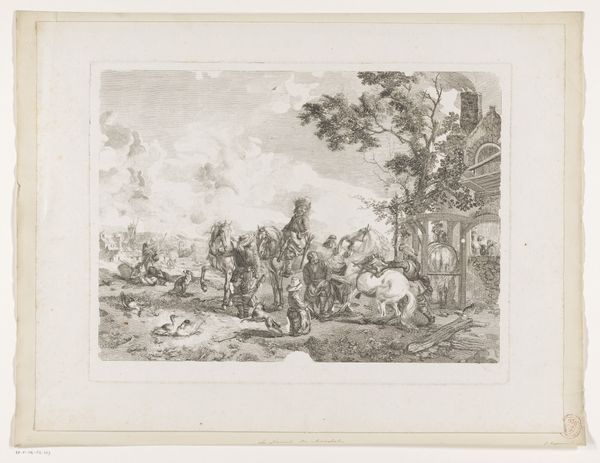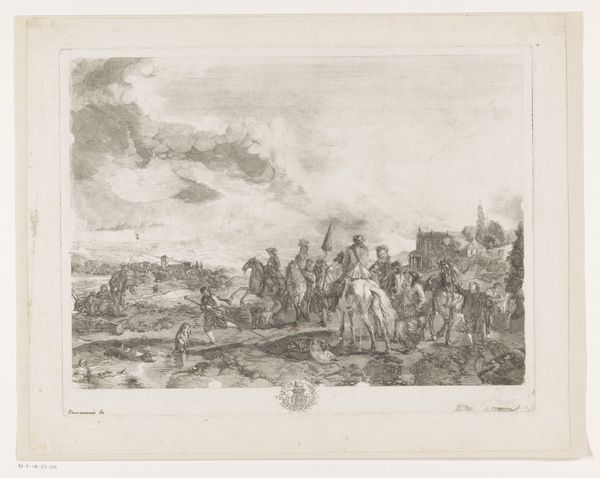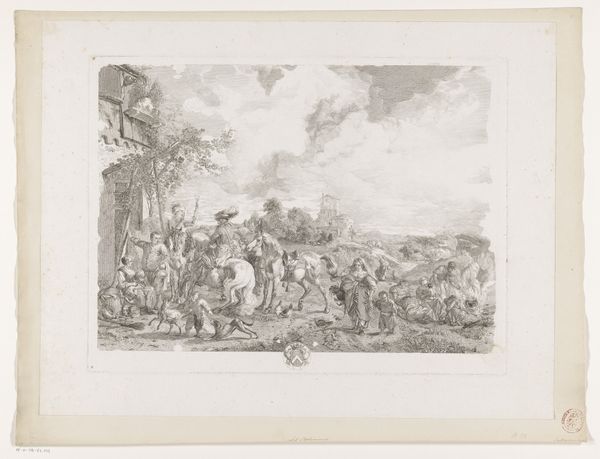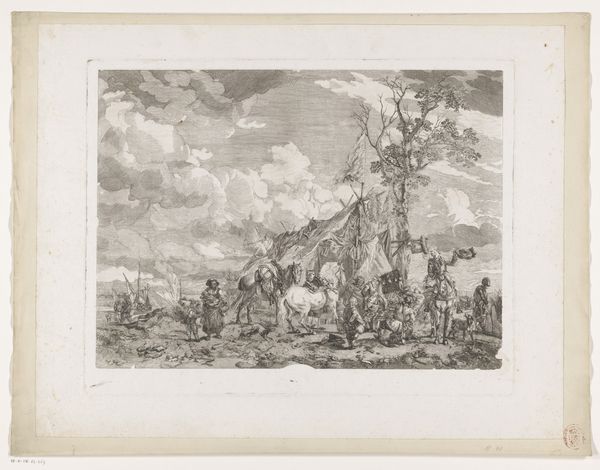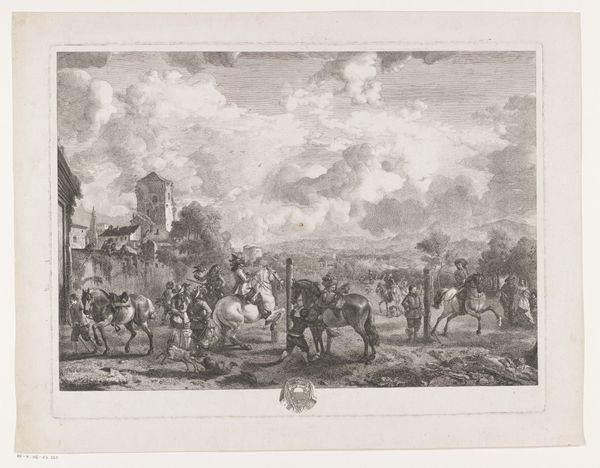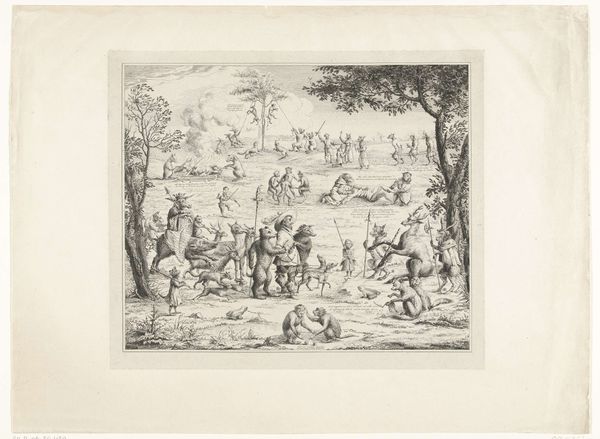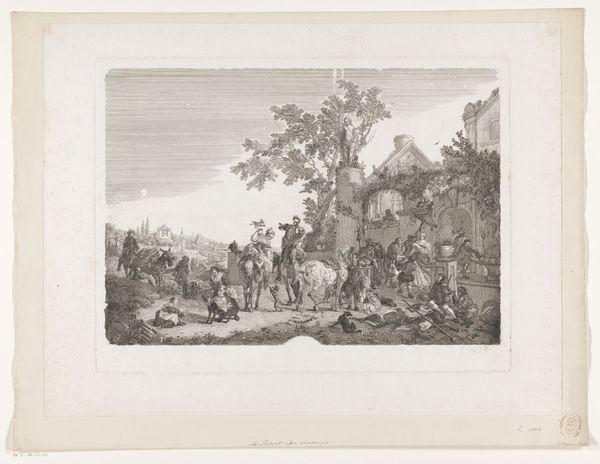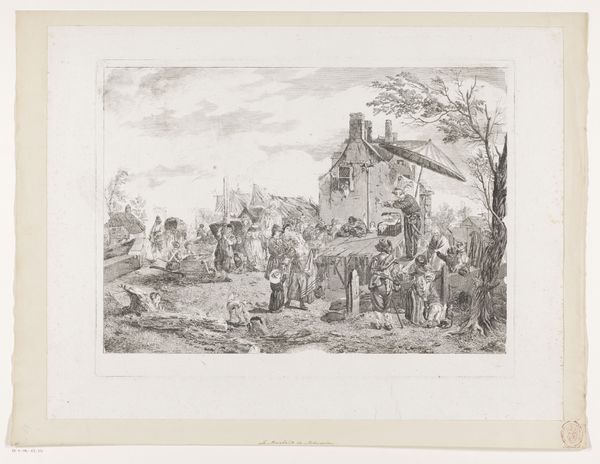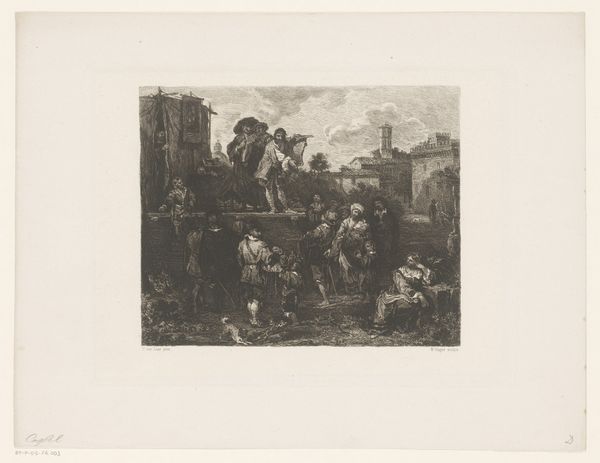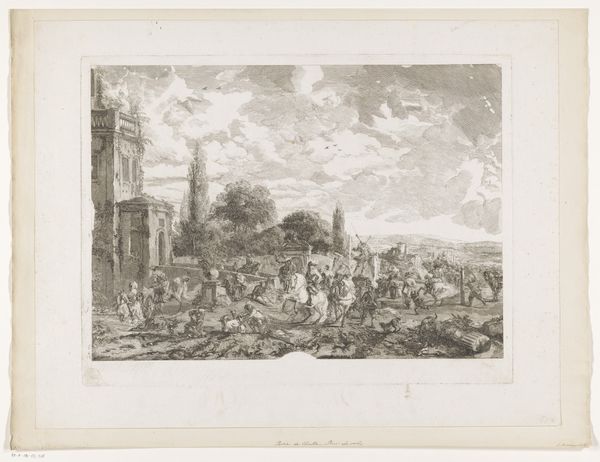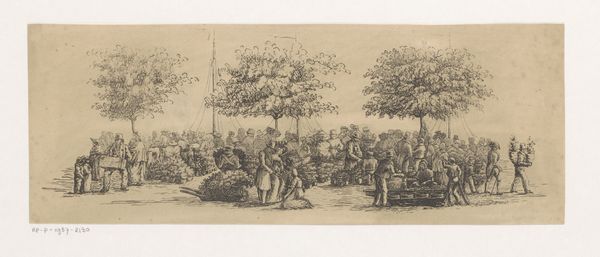
print, etching, engraving
#
baroque
# print
#
etching
#
landscape
#
genre-painting
#
history-painting
#
engraving
Dimensions: height 355 mm, width 472 mm
Copyright: Rijks Museum: Open Domain
Curator: Here we have "Rijschool," a print made by Jean Moyreau sometime between 1733 and 1762, currently held at the Rijksmuseum. The technique involves both etching and engraving. Editor: It has such a lively, bustling energy. The composition feels like organized chaos with all those figures and horses. There's a curious sense of movement, caught mid-stride. Curator: Moyreau’s work often featured genre scenes or landscapes, often idealized. Here, we see a possible convergence of the two: riders and their mounts gathered, maybe for instruction or perhaps a more informal gathering. Do you find any specific symbolism resonating here? Editor: Well, beyond the obvious connotations of power and status associated with horses in that period, I'm particularly drawn to how the composition suggests hierarchies within the social order. The control, or lack thereof, these riders exhibit perhaps mimics control—or absence of it—within a wider societal context. I'm thinking about gender roles and societal control. Do the postures of the figures and their arrangement within the space reflect or subtly challenge norms? Curator: Indeed. The Baroque style favored dynamism. These lines evoke not only movement, but transformation, hinting at the development from novice to experienced rider. The gathering itself represents the importance of social structures that perpetuated social mobility—riding schools literally and figuratively put the elite into motion. And the inclusion of architecture situates us, imbuing it with place and memory. Editor: I see your point. Perhaps this controlled chaos is also a statement on civilization versus nature. These figures are literally trying to tame these majestic creatures, and that struggle becomes a metaphor for control in various contexts. The composition guides our reading and brings out subtle hierarchies. It is also tempting to draw a line between equestrian skill and societal success, since mastering anything back then opened gateways for social climbing. Curator: Yes, the dual engraving and etching techniques help the viewer's perception. Engraving establishes clarity and formality, whilst etching offers expression and freedom. It becomes less a matter of precise representation but the embodiment of control, mastery, ambition. It also embodies status, skill, and, most interestingly, control. Editor: Looking at it this way reframes the work from merely an illustration of a riding school to a more incisive depiction of social codes. That dynamism is powerful.
Comments
No comments
Be the first to comment and join the conversation on the ultimate creative platform.

